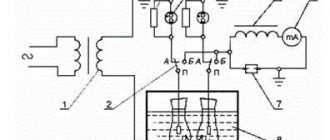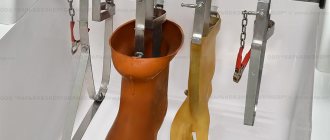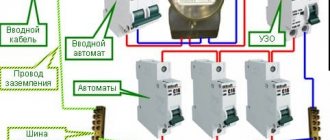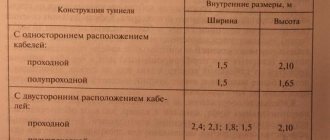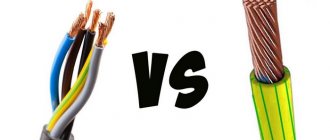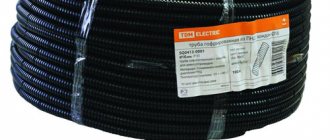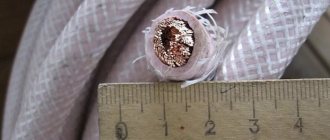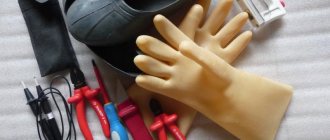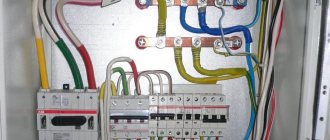Storing cables in drums and testing them
Before delivery
to the installation site, the entire length of the cable must be subjected to visual inspection and, if the need arises, to various tests and measurement checks. A visual inspection makes it possible to verify the integrity and serviceability of the drums, bushings, casing, as well as the quality and reliability of the termination of the wire ends.
In addition, specialists should also check the availability of the technical passport and the compliance of the data in it with reality. Based on the results of the inspections and studies carried out, a cable inspection report on the drum must be drawn up.
Current regulatory documents indicate the need to store all low-frequency cables of more than 100 pairs and intended for organizing connections between stations on special cable platforms that are under constant excess pressure. The level of excess pressure in such storage areas, as well as other external conditions, for example, air temperature during testing, must be indicated in the technical data sheet for each construction length. The technical data sheet for the cables must be placed in a moisture-proof envelope and secured to the inside of the drum cheek. The exact location of the passport in the drum is indicated by a mark on its outer surface.
It is also worth noting that one of the accessible ends of the cable must be equipped with a special air valve with a lock and a cap, or a sealed pipe, necessary for connecting a pressure gauge to the drum and checking the exact parameters of the excess pressure.
Based on a visual inspection and checking the excess pressure in the cable, specialists decide on the need to conduct additional research and measurements to identify a possible discrepancy between the quality of the wire and the parameters described in the passport and regulatory documentation before carrying out electrical installation.
Format and execution of the act
This act, like any other similar document, today can be written in free form - there is no single standard. But in those companies that have developed their own unified model, this should be used.
The same applies to the answer to the question of whether it is possible to write the act by hand: both handwritten and printed versions of the act are acceptable.
The document must be signed by all persons who were present during the inspection of the cable - thus, they will certify the fact that all the data entered in the form is reliable.
With regard to printing, everything depends on whether this stamp product is used in the current activities of the company - if there is a condition for its use in such papers, then the act should be stamped.
The act, as a rule, is made in one original copy, but if there is a need for additional copies, the document can be duplicated.
The finished act is subject to mandatory registration in a special accounting journal (where it is enough to enter its number and date of production).
The act must be stored in accordance with the requirements of the law or the company’s internal regulatory documents (but not less than five years).
Cable examination for defects and malfunctions
Checking and examining the cable in the drum may include the following actions:
- In cases where a visual inspection does not reveal any problems or irregularities in the cable, and the excess pressure fully corresponds to the values specified in the passport (taking into account possible temperature differences and leaks), additional checks and studies are not carried out and the entire length of the cable can be transported to the route for installation.
- When a visual inspection does not reveal obvious violations, defects or damage, but the level of excess pressure does not meet acceptable standards, using special equipment, dried air is pumped into the cable at the required pressure and a control check of excess pressure is carried out 2 days after such work is carried out . If the pressure after 2 days remains unchanged and meets the standards, the condition of the cable is considered satisfactory and it can be sent for laying on the route.
- If a visual inspection shows that the ends of the cable and the entire drum are fully operational, the excess pressure is at the level of 49-69 kPa, but there is no technical documentation on the drum, an additional measurement of the excess pressure is required 2 days after the first check. If the second check shows no change in excess pressure, the cable is considered to be in good condition and can be used in laying cable lines.
- If a visual inspection does not reveal any serious malfunctions or defects, however, the excess pressure in the cables has dropped to zero, specialists need to open the ends of the wire and measure the level of insulation resistance between the cores, as well as the resistance between each core and the metal sheath. When determining that the resistance does not comply with established standards, the craftsmen draw up an electrical wiring test report, in which they indicate the exact resistance values obtained, and the cable itself is considered defective or sent for repair, if possible. When, during checking the resistance parameters, no deviations from the established standards are detected, the exposed ends of the wiring are hermetically sealed, air is pumped into the cable to create the required excess pressure and left for 2 days. After 2 days, the excess pressure is checked again; if this indicator remains at the same level, the cable is considered to be in good condition and it can be sent for installation.
- If any, even minor, damage to the wire sheath is detected, the ends of the cable must be opened to measure the insulation and check for breaks. If during the study no defects or non-compliance with established standards are found, the ends of the wire are sealed, and any defects found on its surface are eliminated. The required amount of dried air is supplied to the cable to obtain the required excess pressure, the level of which must be checked again after 2 days. Based on the final research, a report is drawn up to check the cable insulation resistance and its other parameters.
Example of a technical report
Back
Forward
Below you can use the online calculator to calculate the cost of electrical laboratory services.
Safety requirements
One of the fundamental rules when examining insulation is that you cannot begin work without making sure that there is no voltage in the area being measured. The device used for testing must be certified or at least certified.
It is necessary to use only a megohmmeter whose output voltage meets the established standards. So, for networks or equipment with voltages up to 50 V, a tester is used that produces 100 V. Using a device with a lower value will not provide truthful information about the condition of the area, and a larger one can lead to damage.
Measuring resistance with a megohmmeter must be performed only on disconnected live parts, with the mandatory removal of residual charge. In this case, the grounding from the conductive parts is removed only after connecting the tester. The connecting wires are connected using insulating rods. When working, touching live parts, even with dielectric gloves, is prohibited.
Insulation control
The frequency of control measurements of the condition of the insulating coating is established by regulatory documents:
- once every six months - mobile and portable pantographs;
- annually - conductors and receivers for outdoor installation, as well as when laying them in conditions of increased danger;
- every three years - all other electrical equipment.
Frequency of measurements for various objects
Industrial and energy enterprises have their own inspection frequency, in accordance with approved instructions.
The need for measurements
The insulating layer of electrical conductors is designed to provide:
- protection from external factors;
- protection of service personnel;
- reliability of electrical equipment.
Purposes and types of insulation of electrical equipment
The condition of insulation is influenced by the following factors:
- environment (high temperature, humidity, etc.);
- exceeding permissible current loads;
- exposure to mechanical forces;
- natural wear and tear of the service life.
If the insulating coating is damaged, current leaks, short circuits and accidents with people can be recorded. Performing periodic monitoring of insulation quality helps prevent these problems. Control is carried out by measuring resistance using special technical means.
Checking the megohmmeter
Before checking the cable insulation with a megohmmeter, it is necessary to test the operation of the device itself. Here's how to do it on the M4100 megohmmeter. The device has 2 scales: the upper one for measurements in megaohms and the lower one for measurements in kiloohms.
To work in megaohms:
- ⚡connect the ends of the probe wires to the two left terminals. The probes must be open;
- ⚡rotate the knob and look at the arrow readings. If the device is working properly, it will tend to the left - towards infinity;
- ⚡ you close the probes with each other. When you rotate the knob, the arrow should deflect to the right to zero.
To work in kilo-ohms:
- ⚡ place a jumper between the 2 left terminals and connect one of the ends there. The second end is connected to the rightmost terminal. The probes are open;
- ⚡Rotate the handle and look at the readings. When the device is working properly, the arrow deviates as far as possible to the right;
- ⚡After closing the probes and rotating the handle, the arrow will tend to zero on the lower scale (i.e. to the left).
